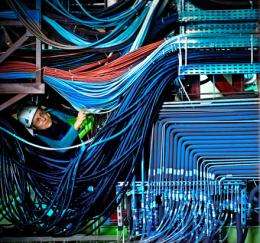Large Hadron Collider reaches record 1380 proton bunches per beam

In just two weeks of operation in "stable beams" mode, the Large Hadron Collider (LHC) has aready reached 1380 proton bunches per beam, the maximum value set for this year. The number of bunches was increased in steps from 624 to then 840 bunches last week, and now from 1092 to 1380.
The machine has also exceeded the maximum peak luminosity – a measure of the instantaneous collision rate – achieved in 2011. The LHC has now reached 3.9 × 1033 collisions per square centimetre per second, while the top value for last year was 3.6 × 1033 cm-2 s-1. Stable beams mode enables the experiments to collect data for physics analysis.
So far this year the total amount of data delivered to the experiments – the integrated luminosity – is now about 0.6 inverse femtobarn, a measure of accelerator performance equivalent to about 60 trillion collisions. Last year, it took about 12 weeks of operation to reach that number.
This year, the higher collision energy of 4 TeV per beam (compared to 3.5 TeV per beam in 2011) and the resulting higher number of collisions expected both enhance the machine's discovery potential considerably, opening up new possibilities for searches for new and heavier particles.
Provided by CERN





















